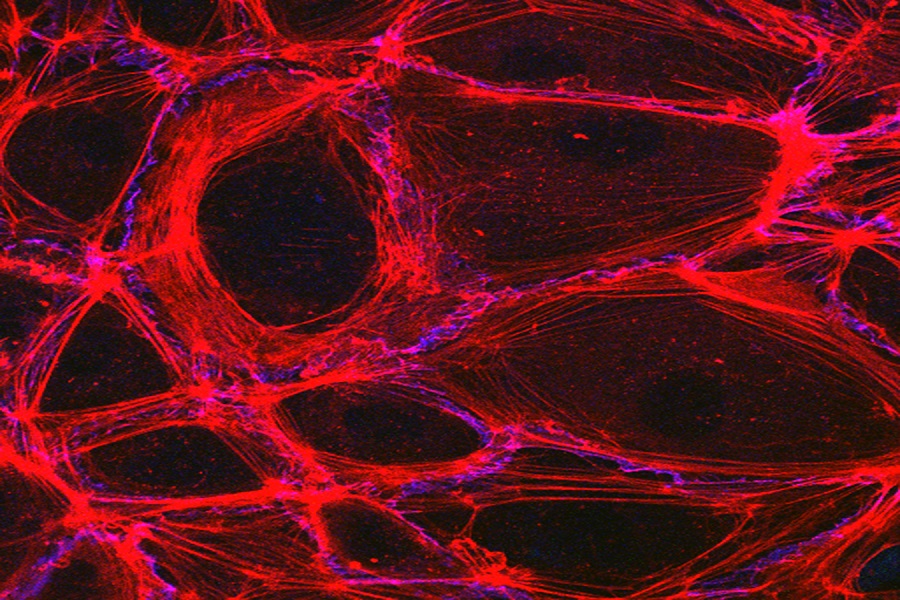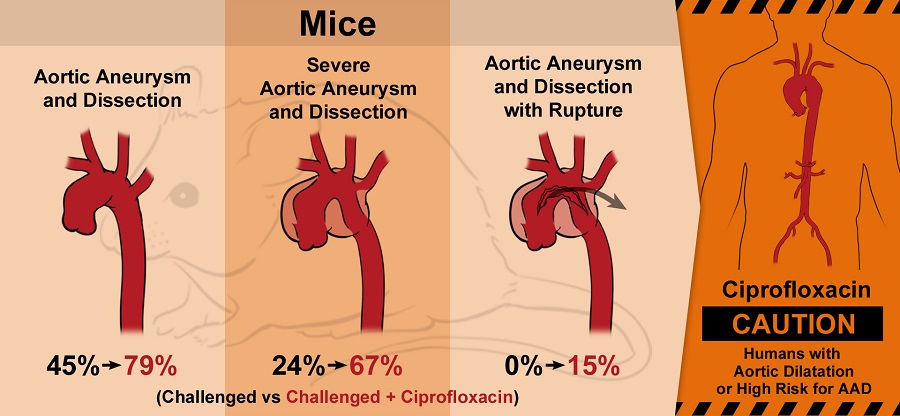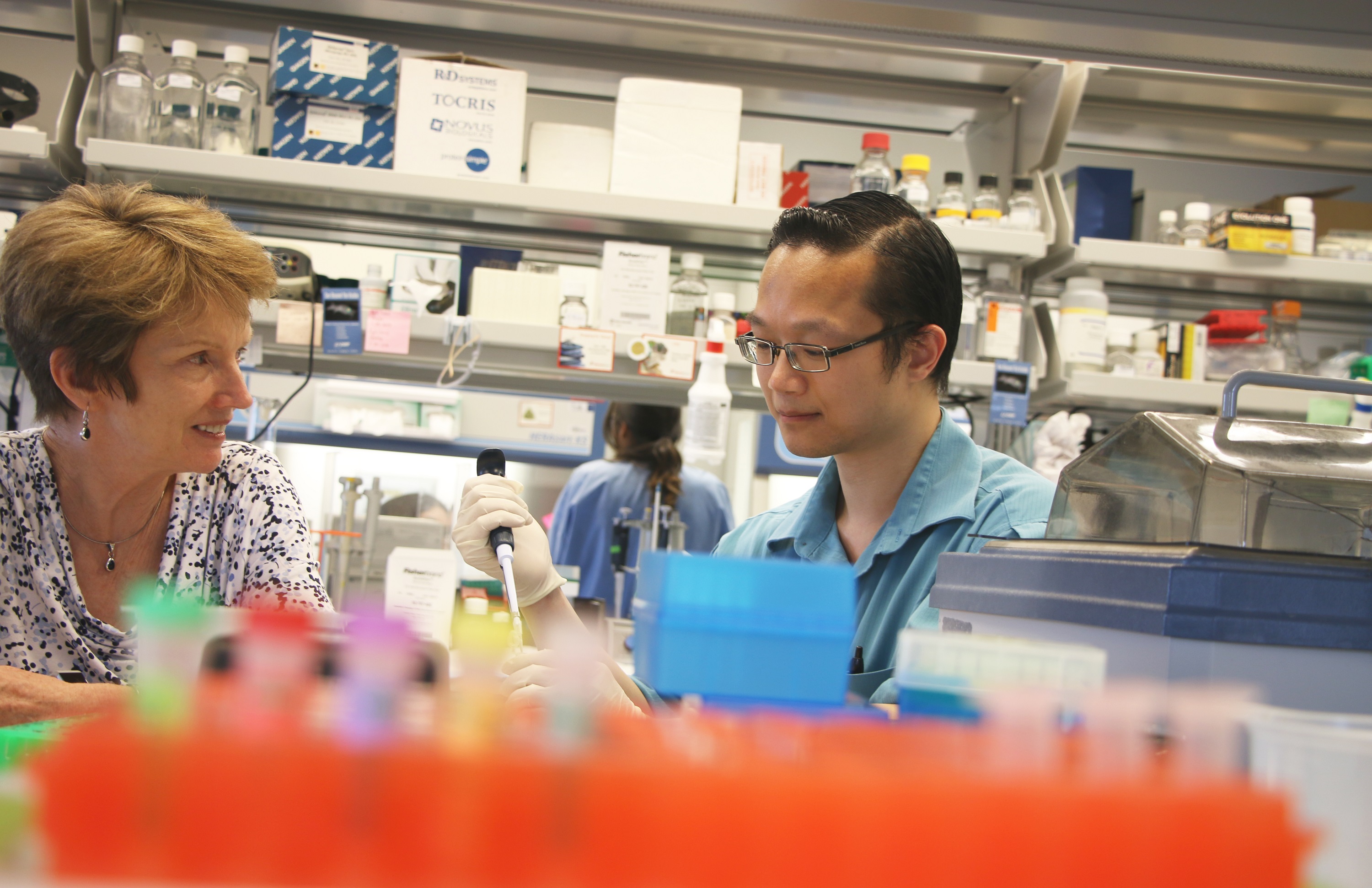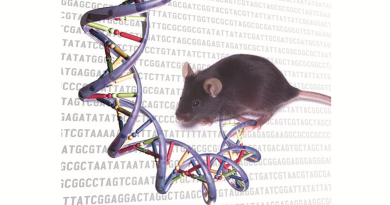The dark side of antibiotic ciprofloxacin
UPDATE: A few months after this article was posted, the work by Baylor researchers has begun to have international impact. Read the details here.
The use of ciprofloxacin and other antibiotics of the class of fluoroquinolones may be associated with disruption of the normal functions of connective tissue, including tendon rupture, tendonitis and retinal detachment. These observations reported in a number of journals resulted in the drugs currently having a black box warning physicians and patients of the potential deleterious side effects.

These studies also suggested that other types of connective tissues might be involved.

“A natural tissue to worry about is the aorta, a blood vessel that relies heavily on having a sound connective tissue component – called the extracellular matrix – to maintain its integrity,” said first author Dr. Scott A. LeMaire, director of research in the division of cardiothoracic surgery, vice-chair for research and professor of surgery and of molecular physiology and biophysics at Baylor College of Medicine.
Two retrospective clinical studies looked at the possible association between fluoroquinolones and cardiovascular problems.
“They found that patients who received fluoroquinolones had a higher risk for aneurysms (formation of balloon-like areas in the aorta that weaken the integrity of the vessel), ruptures or dissections (tears in the wall) than patients who did not receive the antibiotics. This has raised important concerns,” LeMaire said.
Although the retrospective clinical studies point at an association between fluoroquinolone antibiotics and increased risk of aortic diseases, they do not prove that the antibiotics cause the problems. To determine whether a cause-effect association exists, LeMaire and his colleagues worked with a mouse model of human aortic aneurysms and dissections (ADD).
Ciprofloxacin increases risk of tears and rupture in mouse aortas

“In our study, mice with normal or moderately stressed aortas received either ciprofloxacin or placebo and after four weeks we looked at their aortas,” said senior author Dr. Ying H. Shen, director of the Aortic Diseases Research Laboratory and associate professor of surgery at Baylor College of Medicine.
The results showed that normal, unstressed mice treated with ciprofloxacin did not show significant negative effects on the aorta. In mice with moderately stressed aortas that had received the placebo, 45 percent developed AAD, 24 percent developed aortic dissection and none had rupture. On the other hand, 79 percent of the mice with moderately stressed aortas that received antibiotic developed AAD, 67 percent had aortic dissection, and 15 percent had fatal rupture. These results were similar in males and females.

“Our study suggests that in this model of moderately stressed mouse aortas, ciprofloxacin exposure results in the disease progressing more rapidly and more severely, which is exactly the concern,” Shen said.
The researchers then looked deeper into the effects of ciprofloxacin on mouse aortas searching for insights into the antibiotic’s mechanism of action. Compared with the aortas from stressed mice treated with the placebo, the aortic tissue of stressed mice treated with the antibiotic showed more destruction and fragmentation of elastic fibers; decreased activity of LOX, a key enzyme involved in stabilizing the extracellular matrix; increased activity of MMP enzymes involved in extracellular matrix degradation; and enhanced activation of cellular pathways that lead to cell death.
Separate laboratory experiments on human aortic smooth muscle cells revealed that sustained ciprofloxacin exposure reduced the expression of LOX while enhancing the expression of MMP and inducing cell death. In these experimental settings, the antibiotic is disrupting the natural processes that maintain the integrity of the extracellular matrix that is essential for normal aortic function.
“Our findings support the concerns raised by previous retrospective clinical studies and suggest that ciprofloxacin and other antibiotics of the same class should be used with caution in patients with aortic dilatation,” Shen said.
If we consider the clinical data and our experimental results that prove causation in a reliable model of AAD, I believe we have enough evidence for changing guidelines on the use of fluoroquinolone antibiotics for people who have an aneurysm or are at risk for getting an aneurysm,” LeMaire said. “I am hopeful that these guidelines can be changed in short order.”
Read all the details of this study in JAMA Surgery.
Other contributors of this work include Lin Zhang, Pingping Ren, Wei Luo, Alon R. Azares, Chen Zhang, Yidan Wang, Chris Guardado and Joseph S. Coselli. The researchers are affiliated with Baylor College of Medicine, the Texas Heart Institute and Baylor College of Medicine’s Cardiovascular Research Institute.
This study was supported by an award from the Roderick D. MacDonald Research Fund at Baylor St. Luke’s Medical Center (17RDM004).




Interactions in the gut between host cells and bacteria can determine a state of health or disease. A study investigates how antibiotic treatment can affect host cells in a way that drives growth of pathogenic bacteria.
Although antibiotics are probably as old as life itself, over the last 75 years we have been using antibiotics and related antibacterials on a worldwide scale approaching and possibly exceeding one million tons a year. Such use – in the clinic, the farm, the ranch, fisheries, and the home – is having an enormous impact on our ecosystems.
This is definitely true and it’s unfair that patients are not told about it. I was giving it after surgery last year against my objections and during the night I had extremely severe contractions in a tendon replacement that I had had and also in my Achilles tendon. We discontinued it the next day and they did not recur. This also happened to a friend of mine who did not heed my warning and went ahead and took it. He had to stop for the same reasons. Beware of this! PS: I am a physician if that lends believability to my post.